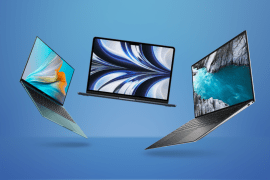Philips 55OLED809 review: leading light for mid-range OLED
Ambilight atmosphere, Google TV smarts and gorgeous visuals make for a compelling combo

Stuff Verdict
An engaging all-rounder OLED with bold images and the always-brilliant Ambilight. The Philips 55OLED809 isn’t the last word in connectivity or catch-up, but earns a podium place on picture quality
Pros
- Punchy HDR performance
- Engaging audio from the built-in speakers
- Ambilight is a delight – and great for gaming
Cons
- Freeview Play still MIA
- Not all HDMI ports are futureproof
- Shadow definition just a teensy bit lacking
Introduction
The OLED809 is about as mainstream as it gets in Philips OLED land. This 4K TV lands right between the bells and whistles of the firm’s flagship sets and its easier-on-the-wallet entry level offerings, with the panel tech to match. You won’t find QD-OLED or Micro Lens Array (MLA) pixels here, but won’t feel short-changed by the otherwise extensive spec sheet.
Google TV smarts, gamer-grade picture modes and Philips’ signature Ambilight mood lighting all make the cut, at a price that won’t make you wince. It lines up almost directly against LG’s latest everyman offering, the C4 OLED, and undercuts the Sony Bravia 8. Philips hasn’t quite cleared the few hurdles it stumbled over at the last time of asking, though. Is there enough here to make up for a few missing features?
How we test TVs
Every TV reviewed on Stuff is put through its paces with a mix of film, TV and game content, using a combination of streaming services, Blu-ray and console games. We use our years of testing experience to judge picture and sound quality, ease of use, and value for money. Manufacturers have no visibility on reviews before they appear online, and we never accept payment to feature products.
Find out more about how we test and rate products.
Design & build: see the light
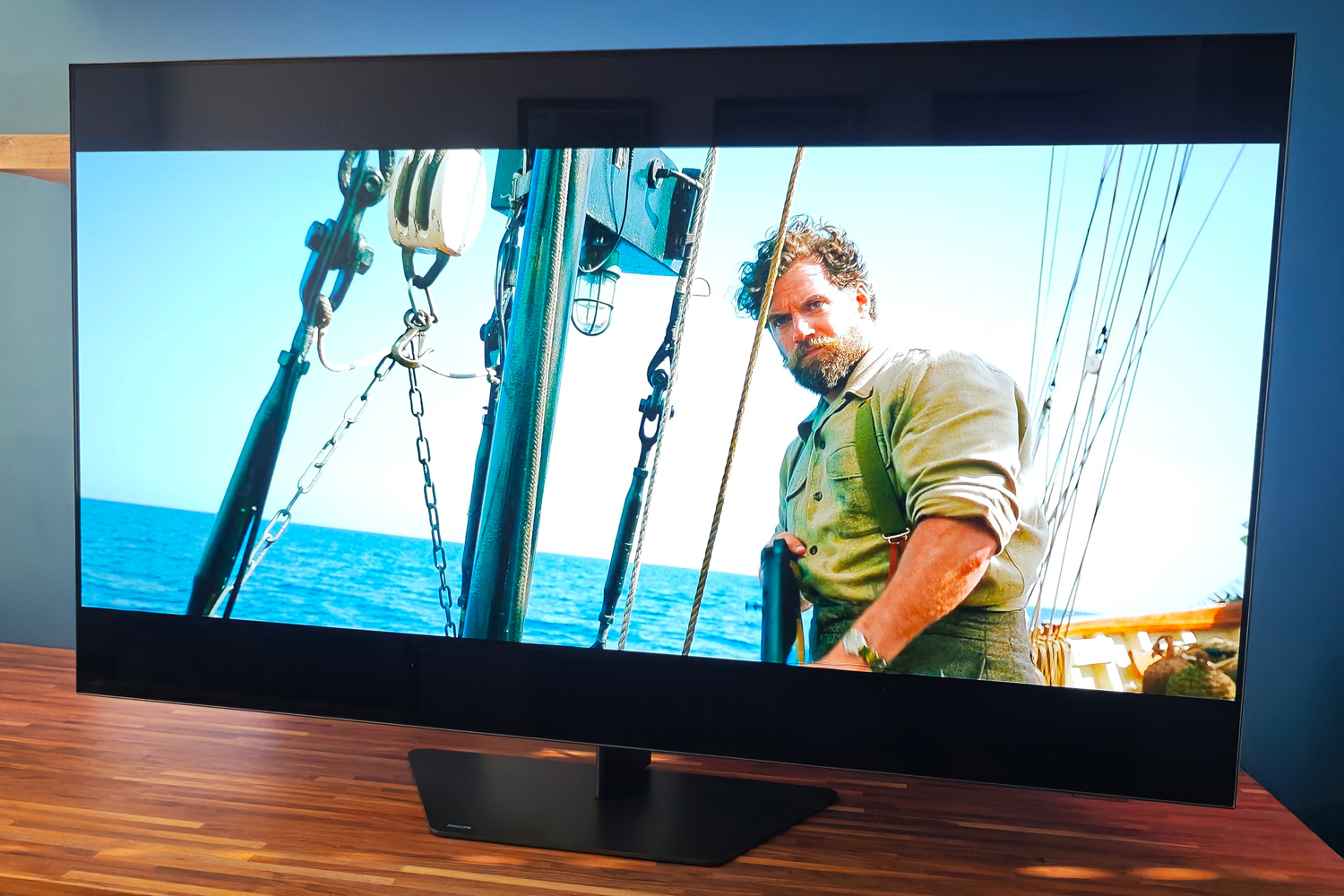
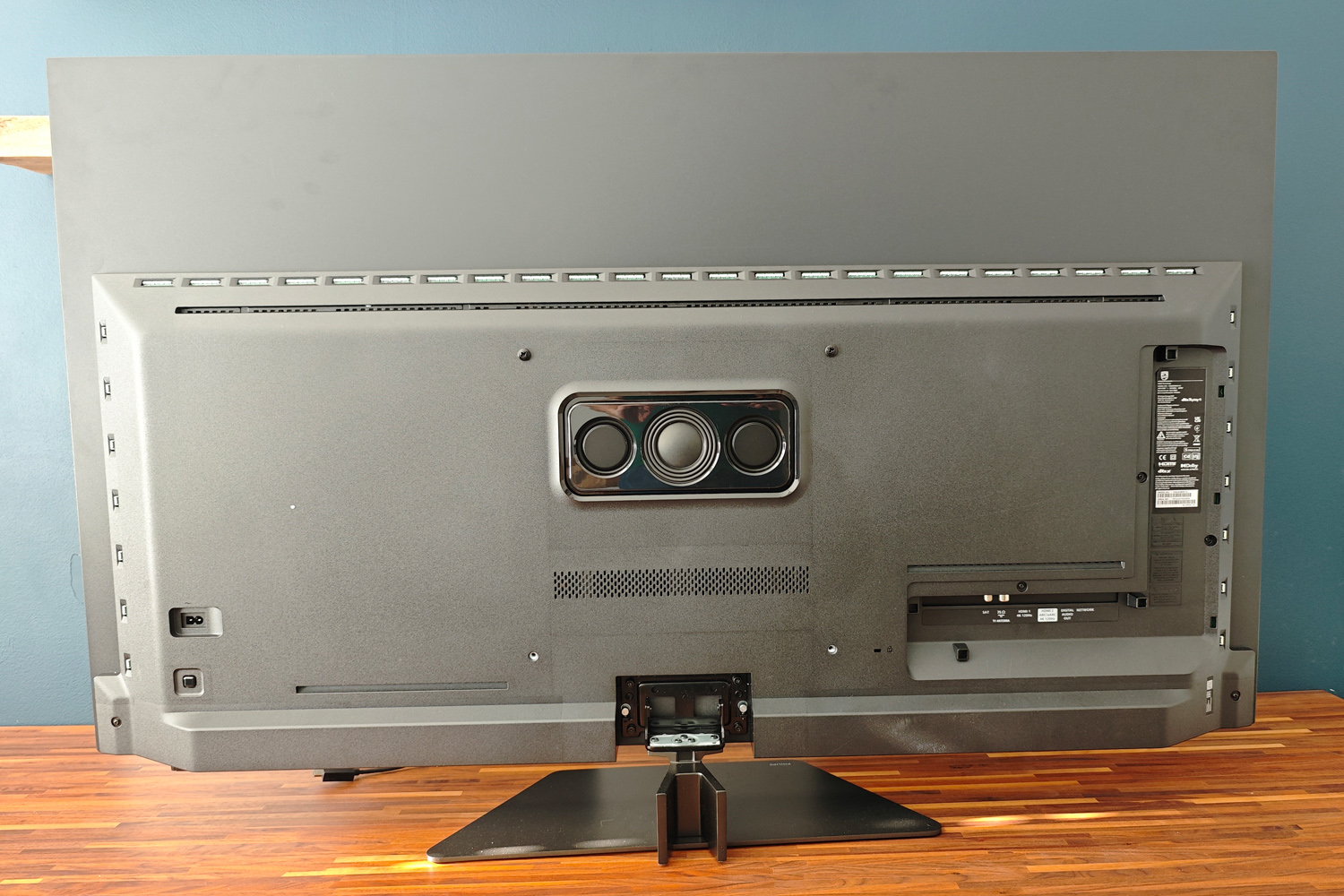
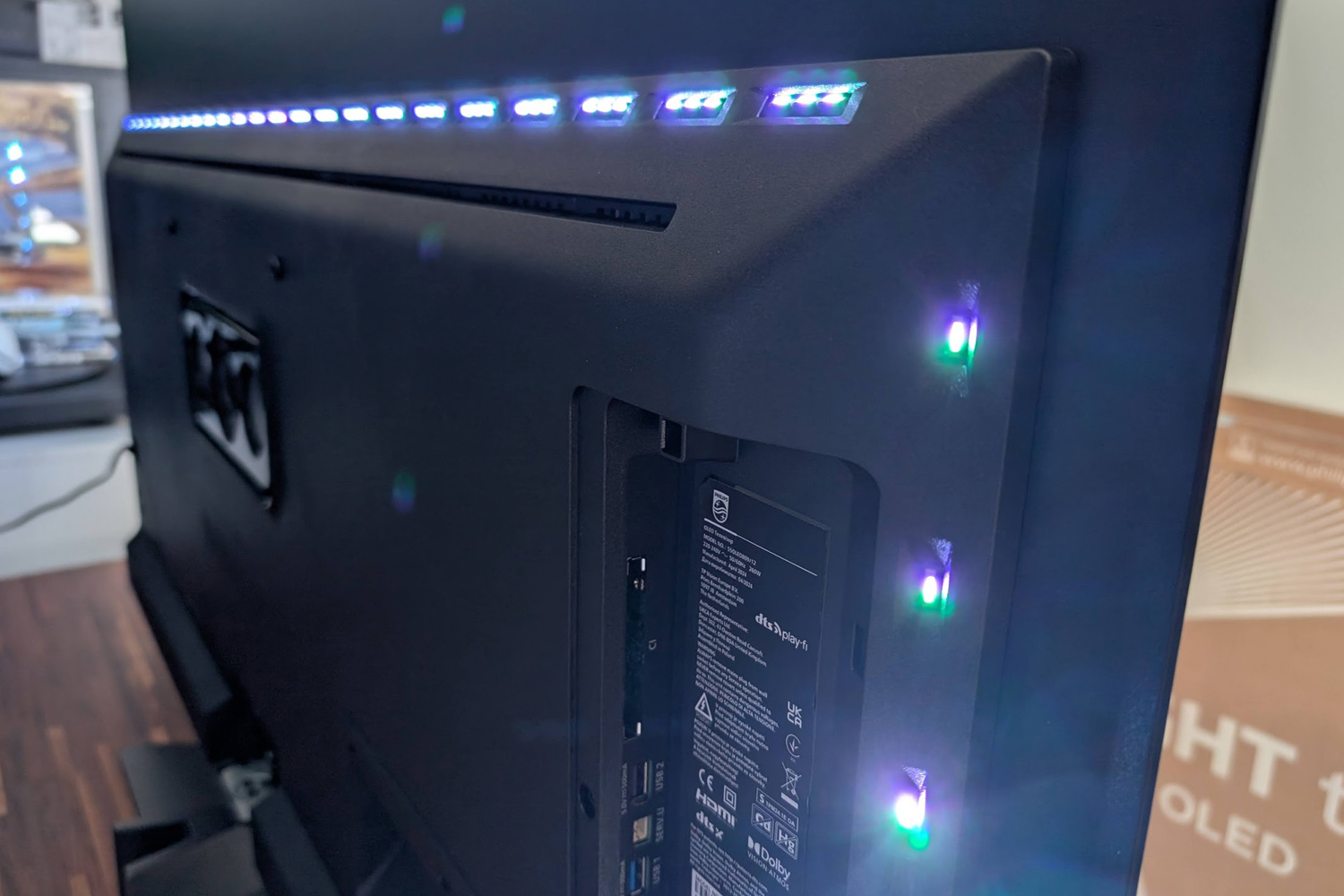
The OLED809 range starts at 42in and grows to a substantial 77in offering, with 48in, 55in and 65in options in between. The 42in and 48in versions use LG’s W-OLED panels, while 55in and up get the brighter OLED EX. If you want flagship-grade Micro Lens Array (MLA) tech, you’ll need to step up to the OLED909.
My 55in review unit sits on a minimal-looking metal stand that fixes into place easily enough with a handful of screws. It’s flat, and leaves a decent amount of room between stand and screen for a soundbar. There’s also a reasonable amount of swivel to make it easier to reach the ports at the back of the set. These can be stealthed behind a clip-on cover if the rear of the TV is going to be visible, but to do so would waste one of the OLED809’s most distinctive features.
Placed nearer a wall, the Ambilight illumination will bathes the immediate area around the TV in colourful hues that match the onscreen action. It’s long been a unique selling point of Philips TVs, and I still love the effect every time I see it in action. It makes the picture seem bigger, and is easier on the eyes when sitting in the dark. This TV has Ambilight Plus, which offers more colour variance than previous efforts; it really does brighten up any room it’s in, and adds impact to even the most mundane content. Solid colours are also an option if the react-to-image setting proves distracting.
You only get LEDs along three sides of the set here, so wall-mounting might look a little squiffy; if you’ve a VESA bracket to fill, then maybe budget for the four-sided flagship OLED909 instead.
I’ve seen thinner OLEDs, though Philips has done well to concentrate most of the bulk at the base of the set. The rest of the chassis is gloriously slim, with a construction that’s more metal than plastic. The subtle white power LED and minimal branding mean this TV is a looker even before you switch it on.
Features: well connected
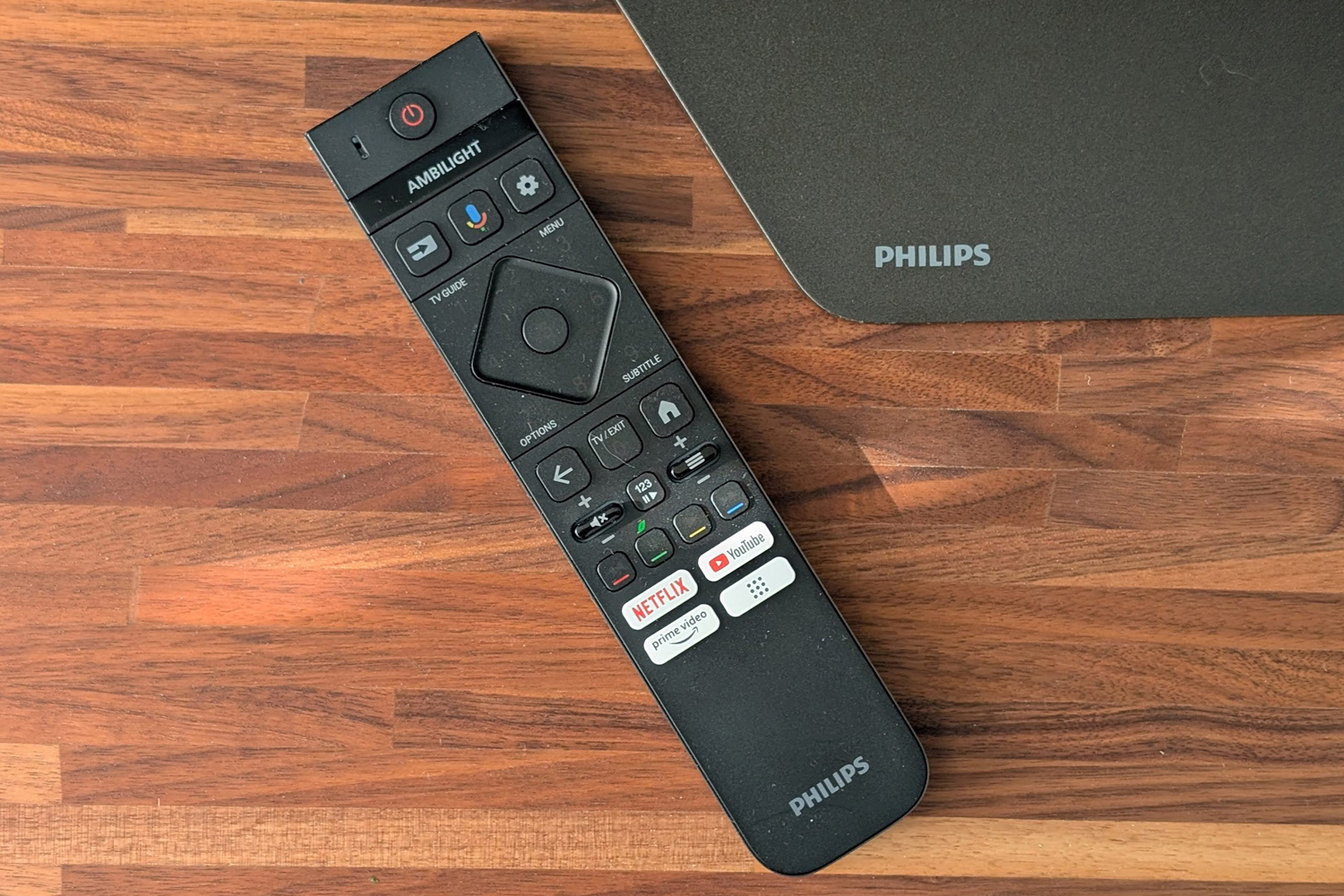
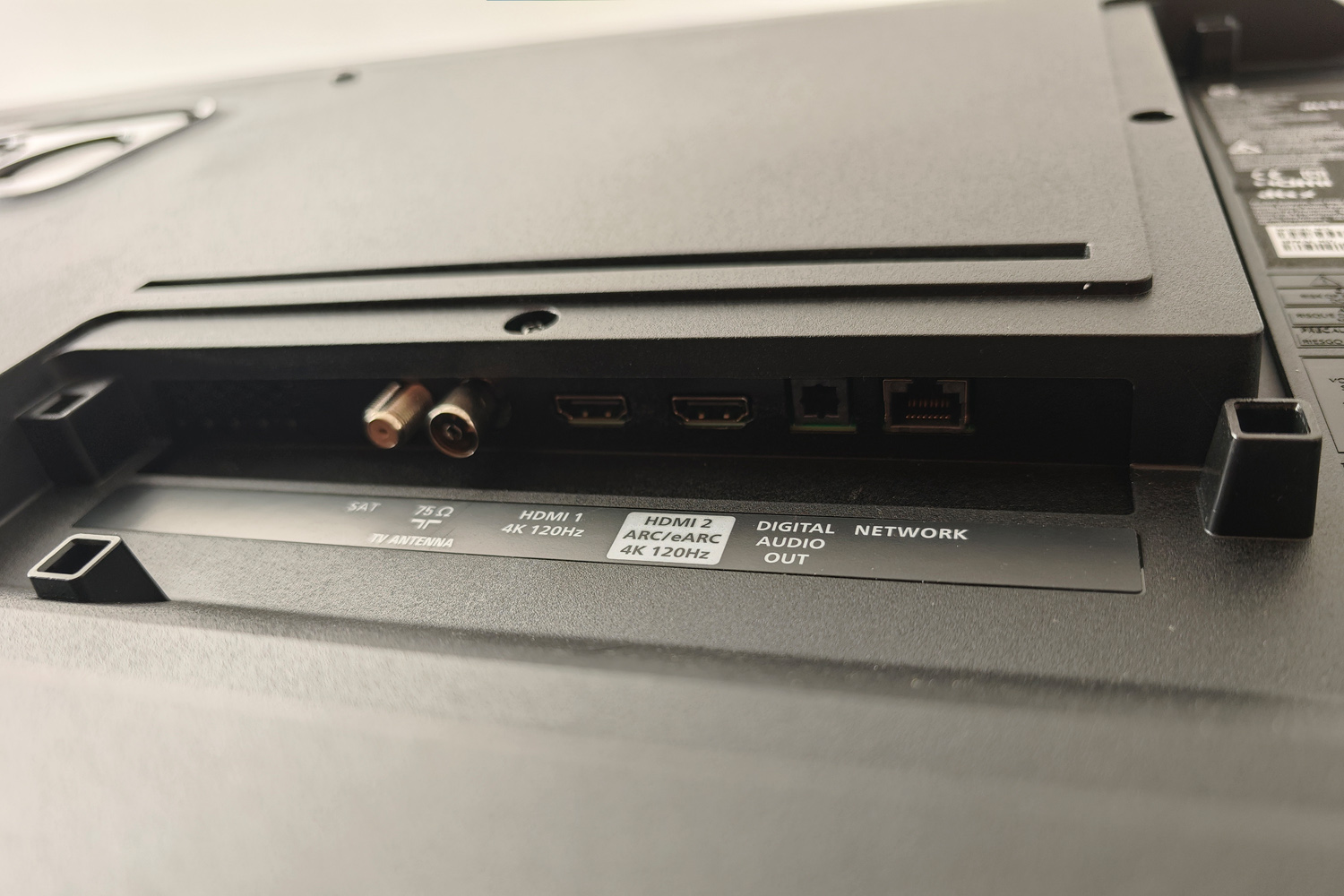
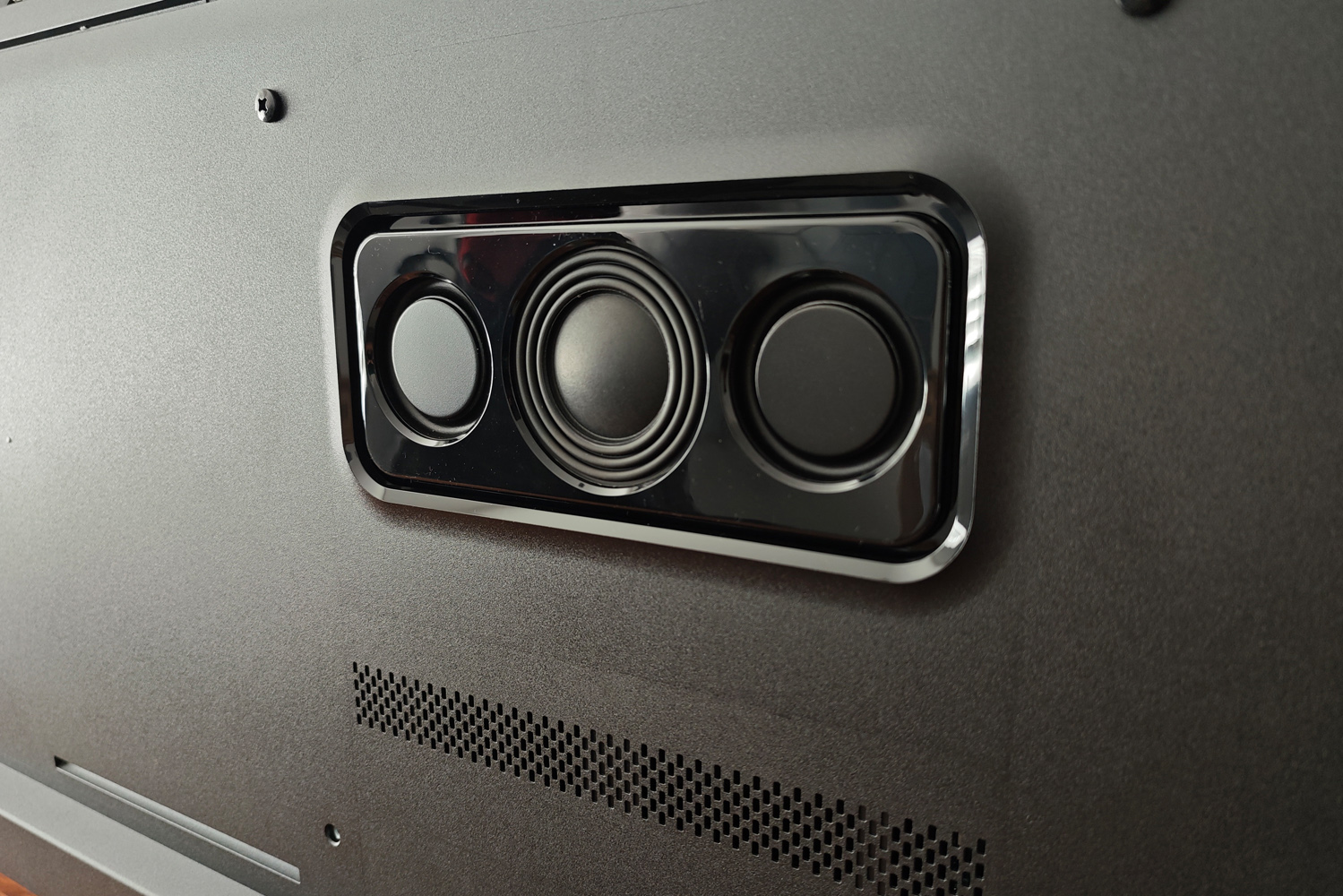
The Philips 55OLED809 is well equipped for gaming, with 4K/144Hz support for PCs with enough graphics grunt. There’s FreeSync Premium, G-Sync and VRR adaptive refresh tech for everyone else, plus the Dolby Vision Game picture mode. Only gamers with a full contingent of next-gen consoles and computers need to worry about there only being two HDMI 2.1 ports (with one also on eARC duties).
General connectivity is equally up to scratch, with twin TV tuners, three USB ports, two further HDMI 2.0 inputs, digital optical audio and an Ethernet port. Dual-band Wi-Fi and Bluetooth are pretty standard at this point. While Google provides the OS, it’s nice to see support for Apple AirPlay streaming buried in the menus too.
A thumbs up to Philips for the excellent HDR support, with both Dolby Vision and HDR10+ adaptive. The 55OLED809 will also play nicely with IMAX enhanced content. There’s also CalMAN calibration, but only those who know what they’re doing (or are willing to pay someone that does) should dig into it.
On the sound front you get a 2.1 channel speaker with 70W of power, good for Dolby Atmos and DTS:X decoding. Switching on the room calibration takes the audio from modest to really rather good, at least as far as built-in speakers go. Ample volume, clear speech and crisp treble are all a given. There’s more low-end here than I’ve heard from rival OLEDs lately, though you’ll still be doing your ears a favour in the long run by investing in even a basic soundbar. DTS Play-Fi support means you can turn the telly into a wireless centre channel for your compatible surround sound system, though I didn’t have access to one to try it out.
Interface: smarter in some ways, not in others
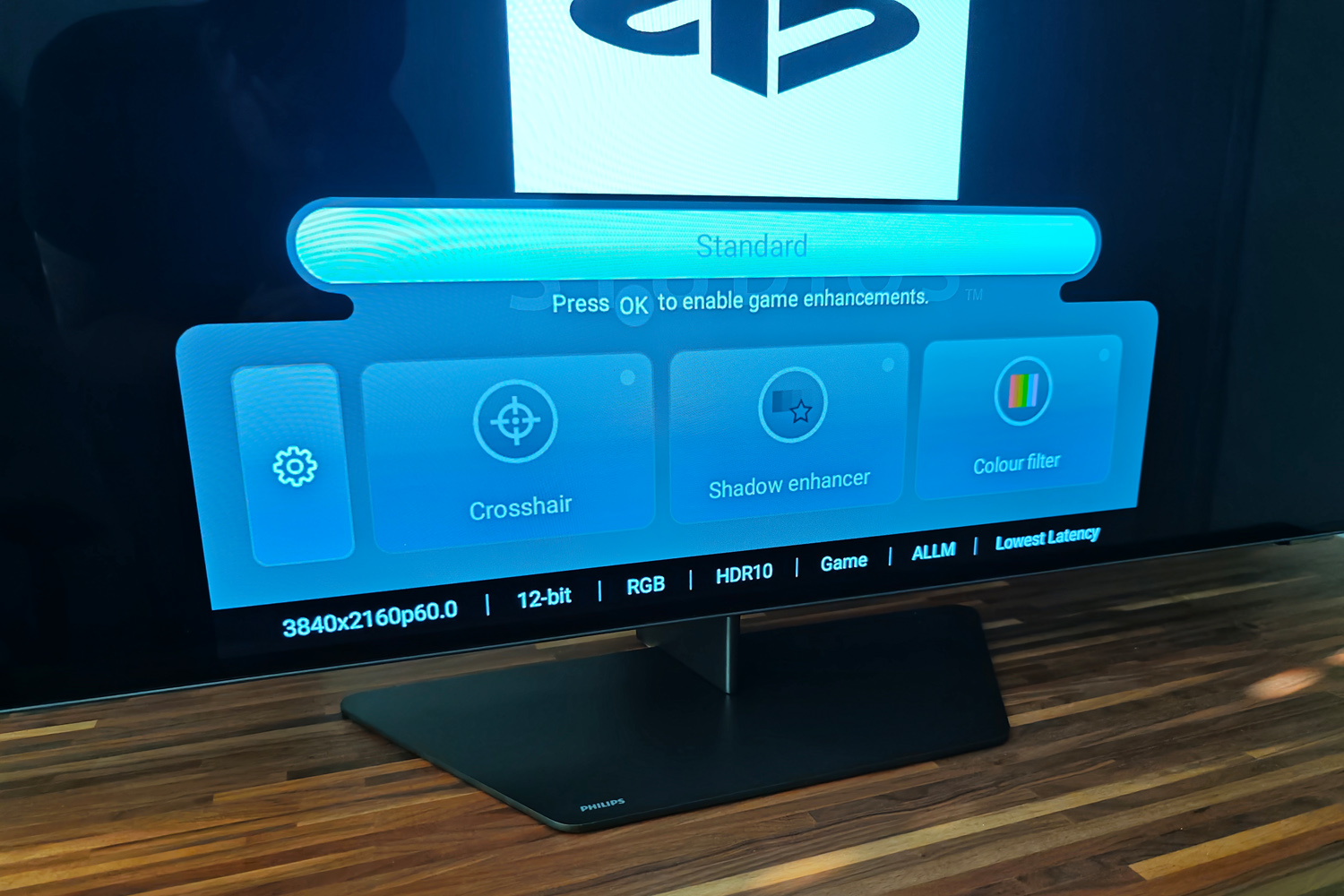
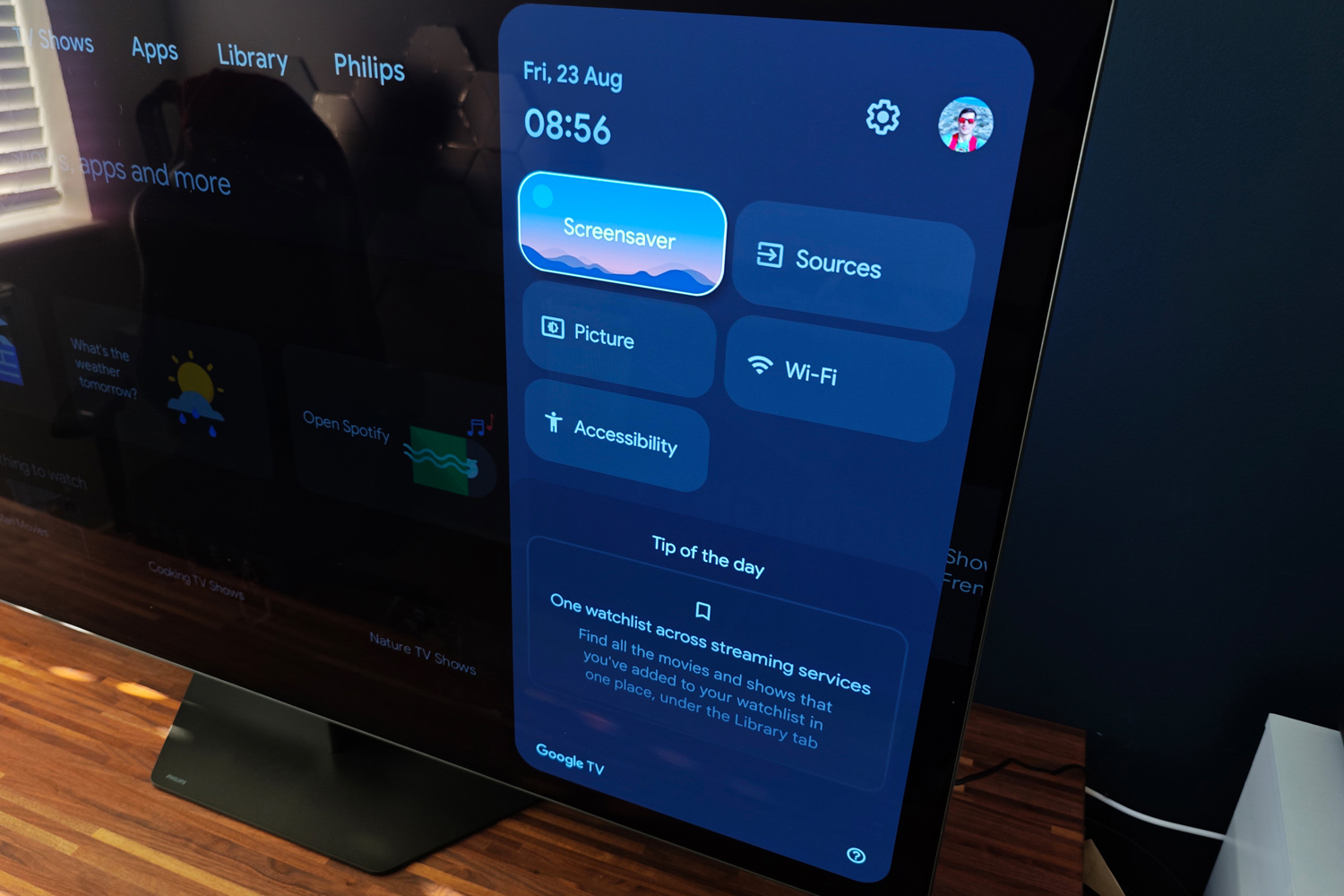
Google has been Philips’ go-to smart TV supplier for a while now, and this latest version is a step up from the old Android TV UI used on older models. It’s sensibly laid out, with content suggestions from your subscribed streaming services placed front-and-centre. I liked how snappy everything felt, whizzing through menus and opening apps in double time.
You get all the usual streaming favourites, including Netflix, Disney, Prime Video and Apple TV+, and there are plenty more available to download through the Play Store. What you don’t get is Freeview Play, meaning several UK TV catch-up services are disappointingly absent. ITVX and My5 now make the cut, which is better than last year, but BBC and Channel 4 are still MIA. Having to hook up a separate streaming stick just to get your Traitors or Gogglebox fix is a faff rival TVs don’t have to contend with.
I’m glad the rest of the menus have been simplified to match Google’s own; things are a lot more straightforward than they were on previous Philips TVs, which almost needed an Ordnance Survey map to navigate. Getting around is also a breeze using the new remote control, which also takes the “less is more” approach. The metal body and scattering of backlit buttons make it feel rather luxurious, and USB-C charging means never having to scramble for new AA batteries. An integrated microphone lets you issue voice commands to Google Assistant, or you can swap to Alexa if you prefer.
On the gaming side, a dedicated menu lets you quickly toggle an onscreen crosshair, boost shadows to make it easier to spot hiding enemies, or apply a colour filter to the image. You can save picture setting tweaks to custom presets, in case you only want them for certain games.
Performance: colour explosion
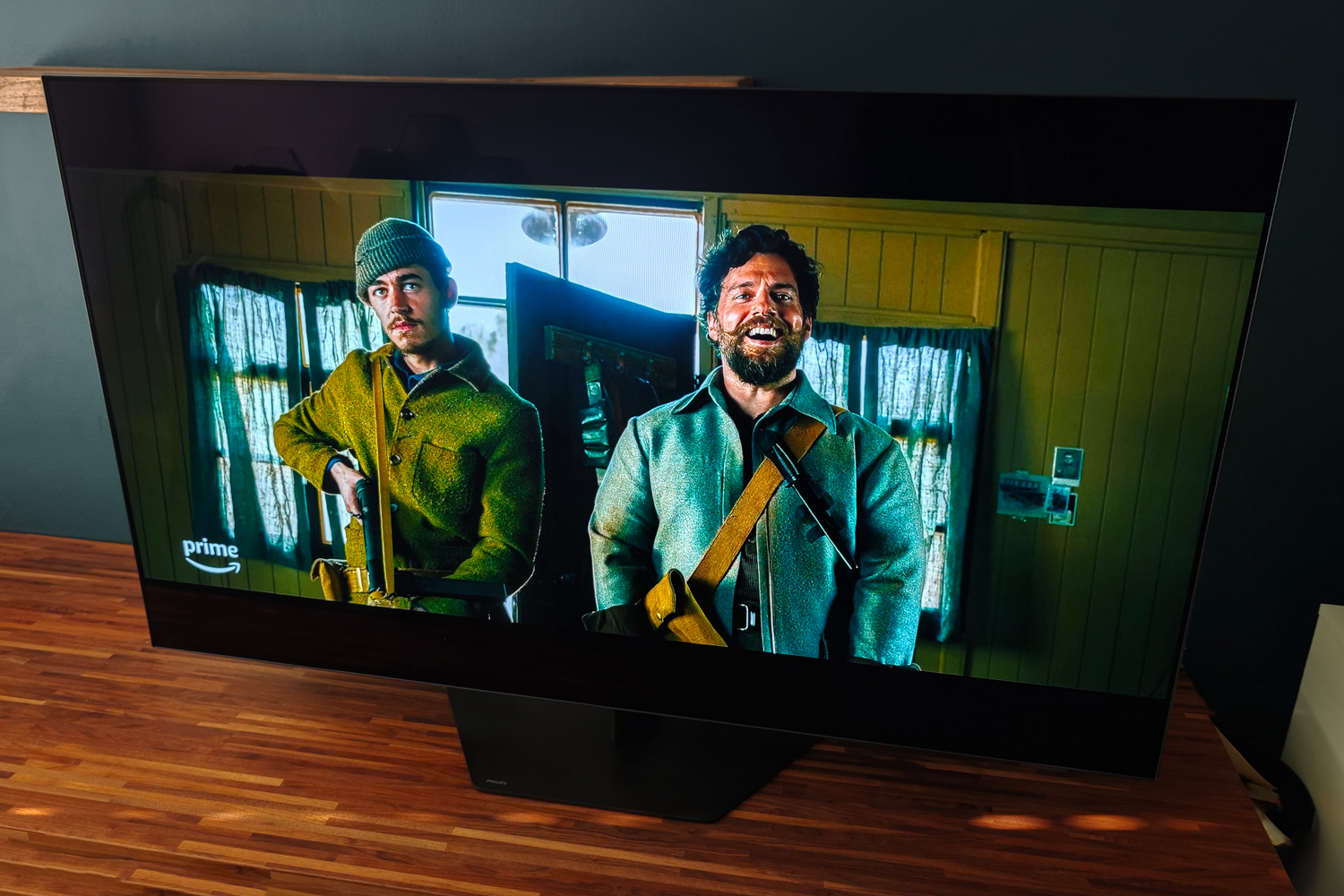
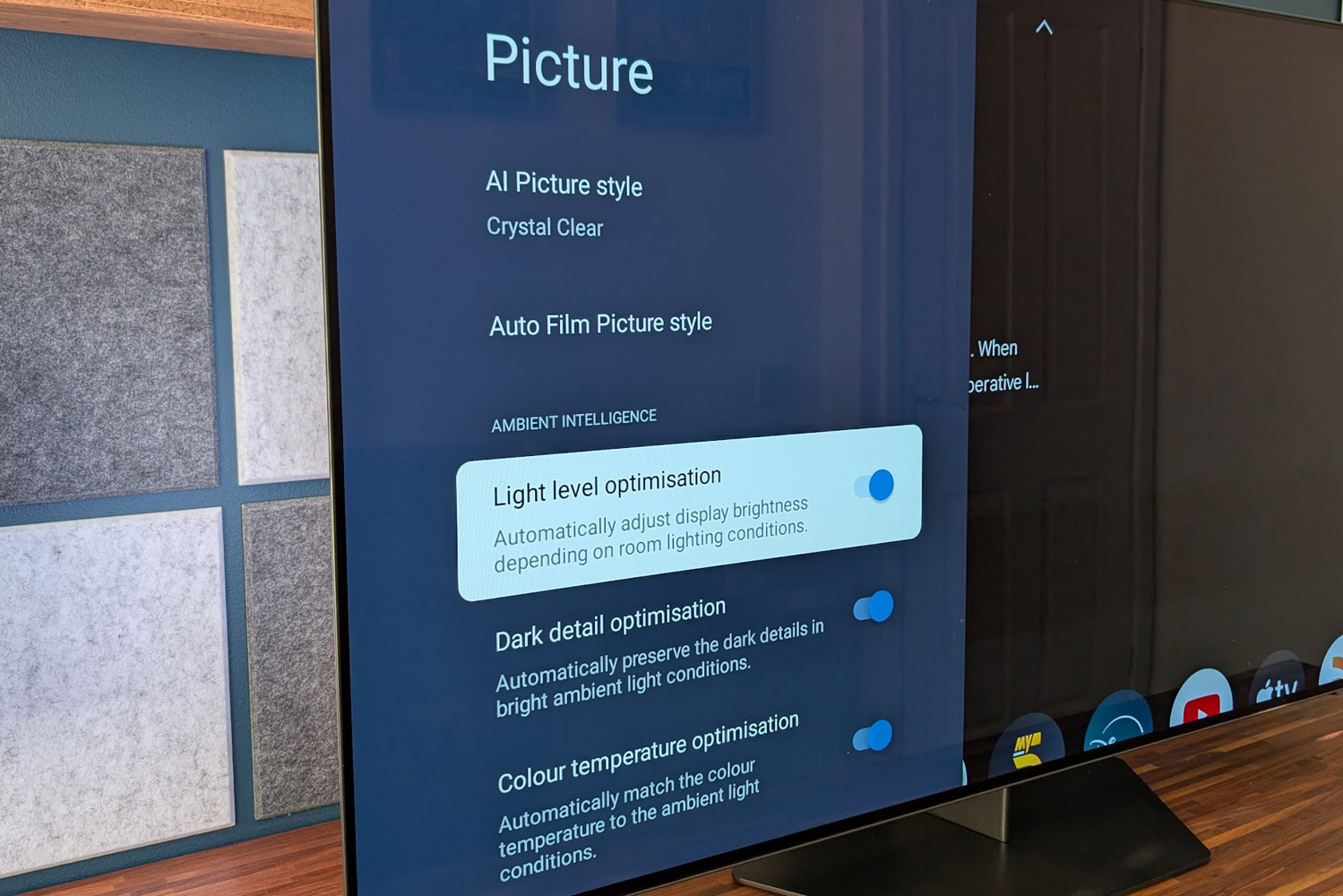
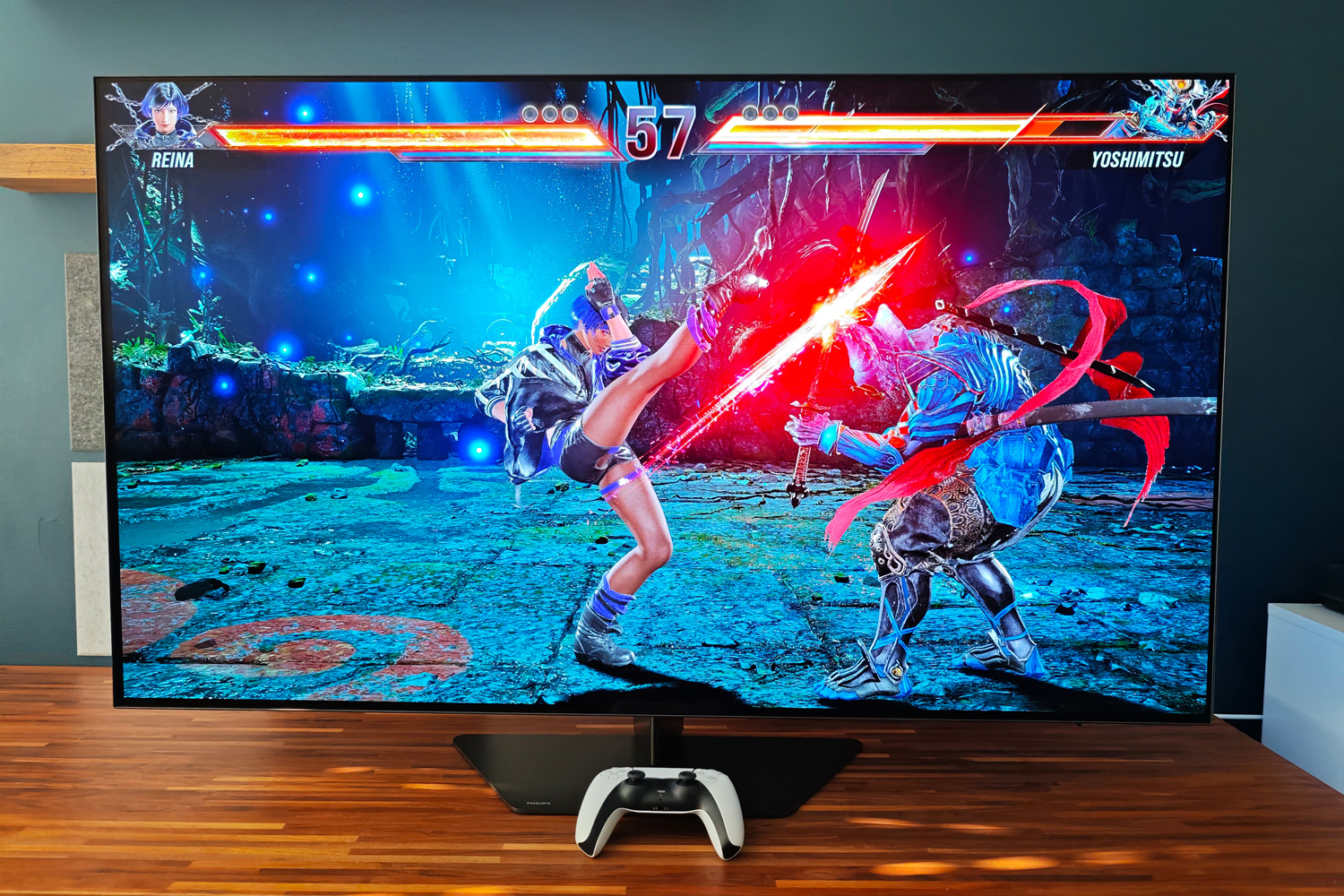
If you’ve yet to sit in front of a 2024 flagship OLED, you’ll be blown away by how bright the Philips 55OLED809 can get. The OLED EX panel puts in a fantastic showing that’s only bettered by far more expensive sets with MLA tech. Fresh out of the box, I was impressed with how impactful the image was, even in a brightly lit room in the middle of the day. For the cash I can’t name an OLED that does it better, and if you need more you’ll have to accept a mini-LED TV is the way to go.
Philips’ 8th Gen P5 AI processor is most comfortable with native 4K content, delivering exceptional amounts of fine detail and an expansive colour palette. The level of gradation between hues is impressive indeed, with HDR content showing a big gulf between the brightest and darkest parts of the image.
Motion was always handled deftly once I’d dialled back the processing, with none of the subtle artefacting present on the Samsung S95D. You’ll want it for fast-panning football games, but it can be cut back to the lowest setting for most other content. Only upscaled broadcast content lets the side down a bit. Full HD footage is softer than some rival models, while standard def TV reveals a lot more noise and motion processing that isn’t quite as on point.
Darker scenes reveal a slightly more uniform shadow treatment than I’ve seen on Sony’s best effort OLEDs, which squeeze out just a little more contrast from the source, though there’s very little in it. Dolby Vision Filmmaker is still a wonderfully accurate preset, even if it’s best used with the curtains closed.
The 55OLED809 is equally adept at gaming. With the picture processing stripped right back, fast-paced shooters felt wonderfully fluid. Input latency is comfortably below the 15ms I expect from good gaming TVs, too.
Philips 55OLED809 verdict
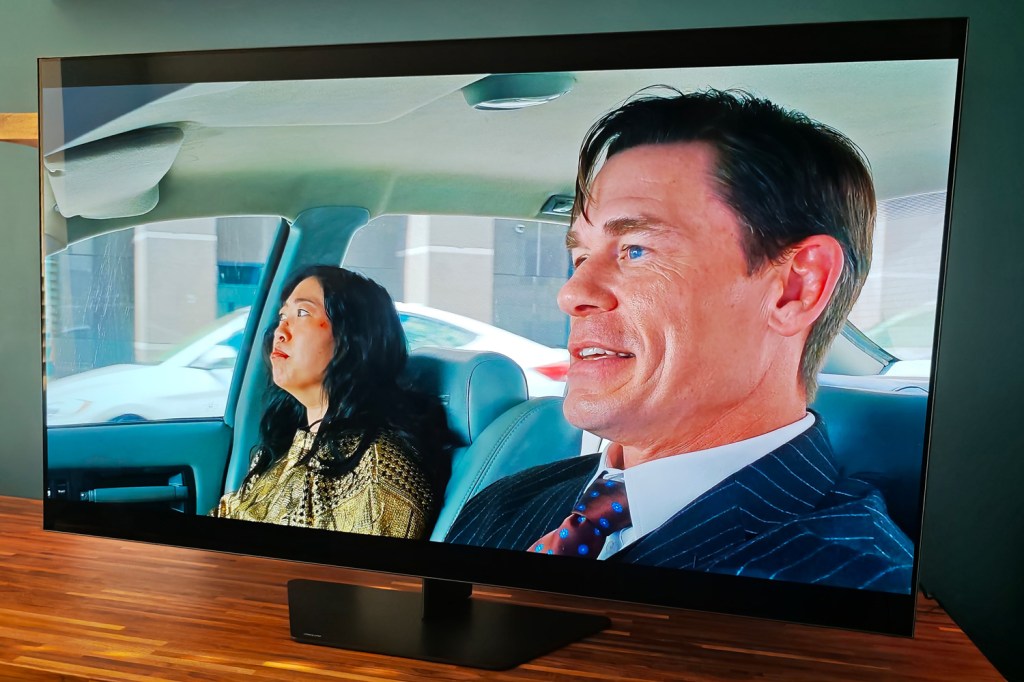
The 55OLED809 really won’t leave you wanting for much. Philips has delivered on 4K picture quality as usual, and it’s a fantastic choice for gaming. Ambilight is as appealing as ever, and the streamlined menus will be a breath of fresh air for those used to the firm’s previous efforts. Brightness is mighty impressive for a mid-tier OLED, and audio is pretty punchy too.
A few familiar foibles let the side down a bit, though some (the lack of Freeview Play) will be a bigger deal than others (only two HDMI 2.1 ports). Some rivals handle upscaled and broadcast content a little better, while others have it beat for outright shadow definition. But that doesn’t spoil what’s otherwise an excellent TV.
Stuff Says…
An engaging all-rounder OLED with bold images and the always-brilliant Ambilight. It’s not the last word in connectivity or catch-up, but earns a podium place on picture quality alone
Pros
Punchy HDR performance
Engaging audio from the built-in speakers
Ambilight is a delight – and great for gaming
Cons
Freeview Play still MIA
Not all HDMI ports are futureproof
Shadow definition just a teensy bit lacking
Philips 55OLED809 technical specifications
| Screen size | 42, 48, 55in (version tested), 65in, 77in |
| Resolution | 3840×2160, 120Hz |
| HDR formats | Dolby Vision, HDR10+, HLG |
| Inputs | 2x HDMI 2.1, 2x HDMI 2.0, 3x USB, digital optical audio, CI+, Ethernet, Wi-Fi, Bluetooth |
| Smart TV OS | Google TV |
| Dimensions | 1225x701x113 mm, 17kg (panel only) 1225x773x230 mm, 20.8kg (with stand) |


